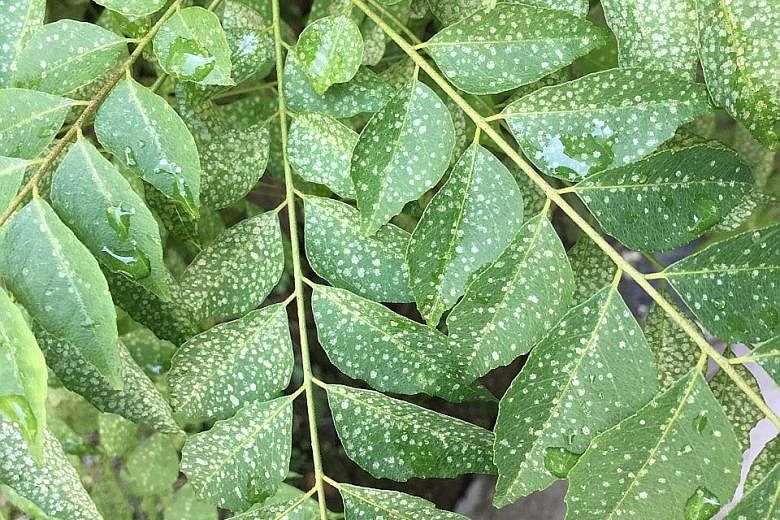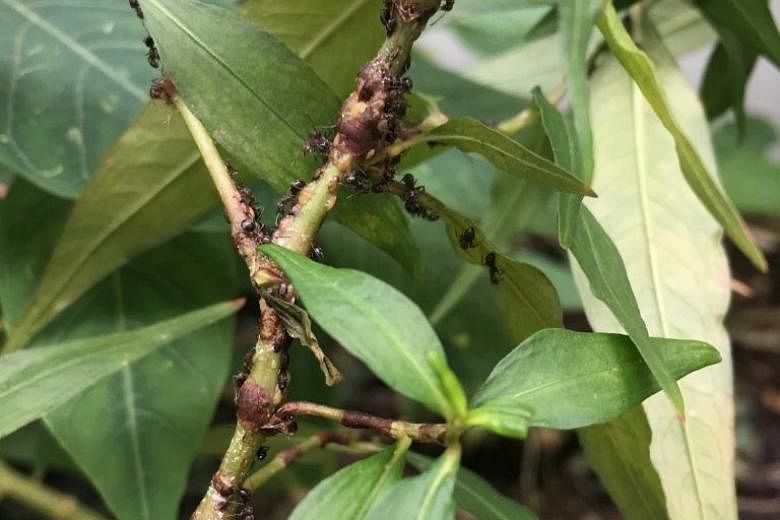ZZ plant needs more water
My ZZ plant is placed near the window. I water it only when the soil is dry. Why does the stem not grow? Also, the leaves lower down the stem turn yellow and curve inwards. Why does this happen?
Hor Wing Leong
Your ZZ Plant (its botanical name is Zamioculcas zamiifolia) appears to be lacking water.
Although it is relatively drought-tolerant because it has a storage organ underground, a lack of water for prolonged periods can lead to the symptoms you described.
This is also evident from your picture.
For optimal growth, keep the plant's soil moist at all times. However, it should not be soggy to prevent the plant from rotting.
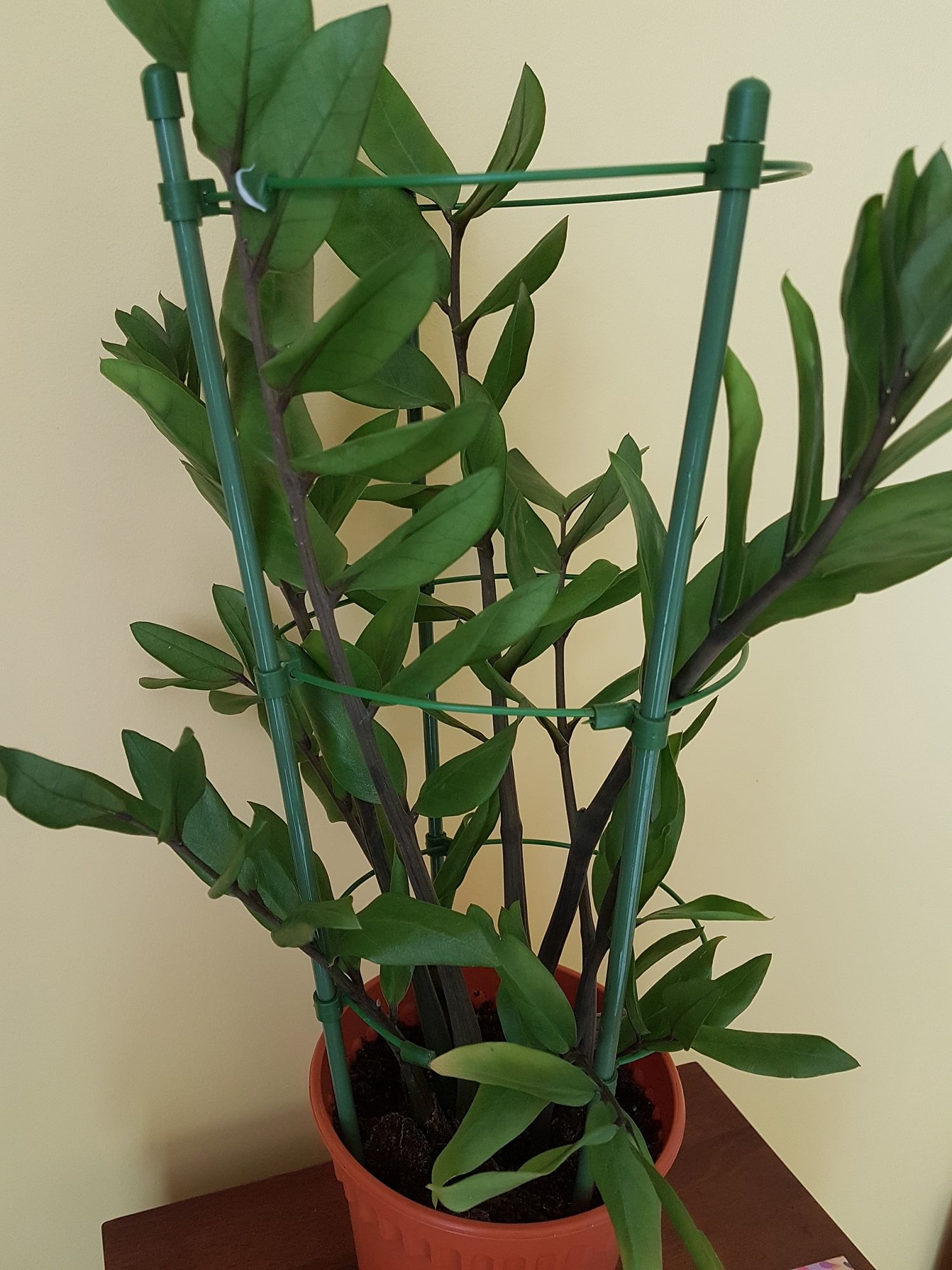
Although it is often touted as a shade-tolerant plant, the ZZ Plant grows best if it is exposed to at least four hours of filtered sunlight for compact and sturdy growth.
Citrus Hindu Mite infesting curry tree plant
There are spots on the leaves of my curry tree plant. What are they? I do not use fertiliser or pesticides. Are the leaves still edible?
Anna Khoo
The spots on the leaves of your curry tree - its botanical name is Murraya koenigii - are caused by a tiny pest known as the Citrus Hindu Mite or Hindustan Citrus Mite. This pest also affects plant species from the genus Citrus.
Affected leaves will not recover even after treatment.
Research on how to control this pest is still ongoing. However, some environment-friendly pesticides such as summer oil or soap may be used to control the pest population.
Sugar-rich residue attracting ants
Why is my plant crawling with black ants?
Deborah Koh
Your laksa plant - its botanical name is Persicaria odorata - is infested by scale insects, which appear as brown bumps. These sucking pests secrete sugar-rich honeydew excrement which attracts ants.
To eliminate the ants, manage the scale insect population first. If only a few stems are affected, remove the scale insects using an old toothbrush with soft bristles.
These pests can be controlled by neem oil or summer oil, which suffocates them. Follow the instructions on the product label and create a more diluted solution to be on the safe side.
Test your plant's sensitivity to the oil by spraying the solution first on a small part. Oil-based pesticides should be sprayed either in the early morning or late in the evening.
Nightblooming Cactus thrives in moist spot
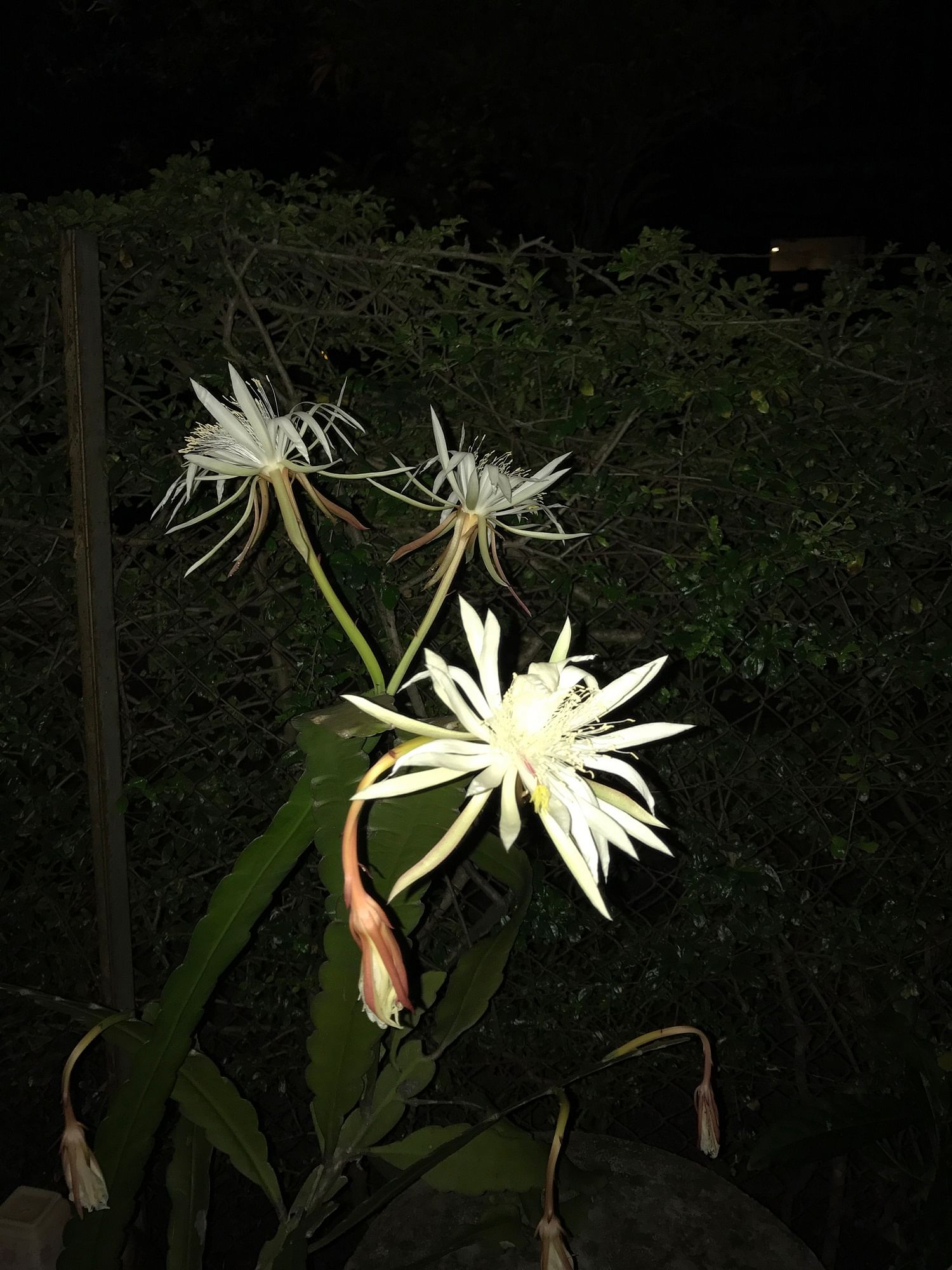
What is the name of this plant ? Its flowers bloom only at night.
Tay Hui Hoon
The plant is botanically known as Epiphyllum hookeri subspecies hookeri. Its common English names include Hooker's Orchid Cactus and Nightblooming Cactus while its Chinese name is Zhi Ye Tan Hua, which literally translates to "erect-leafed Epiphyllum".
Unlike the drought-tolerant desert cacti many people are familiar with, this species is a type of epiphytic jungle cactus that grows in a moist forest environment. It does well under filtered or direct sunlight and requires a well-drained, moisture-retentive media to thrive.
Madagascar Periwinkle needs water
What is the name of this plant ? I tried to propagate it using stem-cuttings on rainy days to prevent it from drying out. But the next day, the leaves folded downwards. What happened?
Oei Khoen Hwa
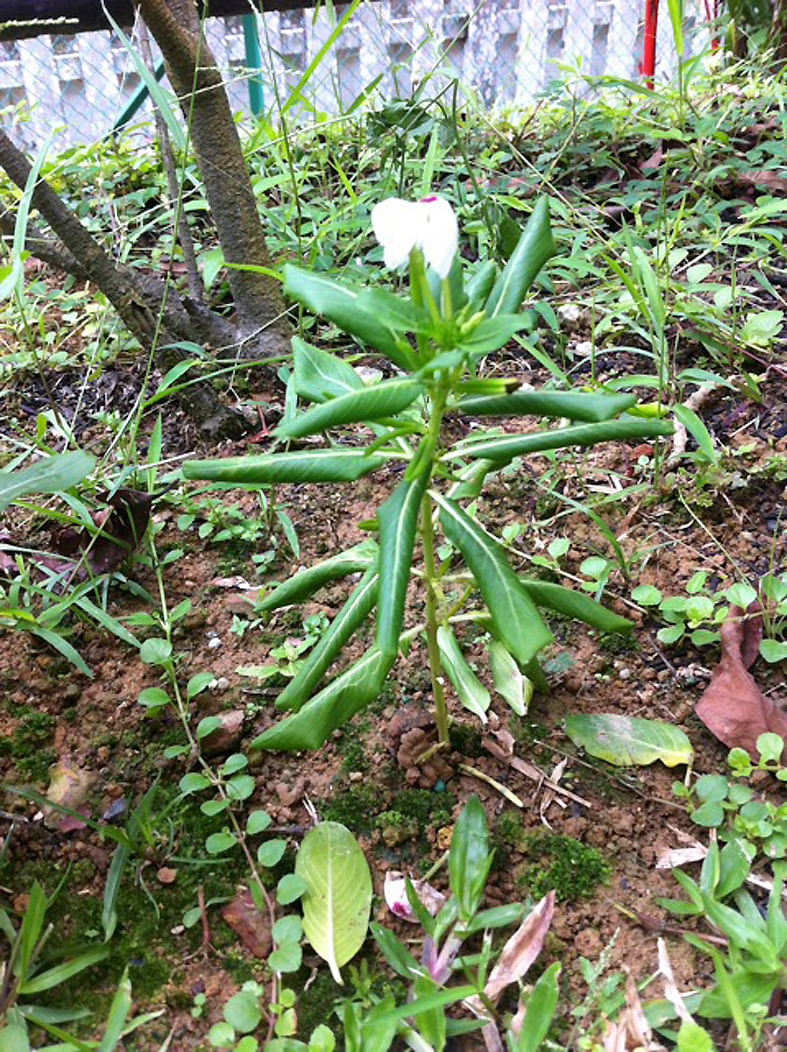
The plant is a version of the Madagascar Periwinkle, which bears white flowers.
Its botanical name is Catharanthus roseus "Alba".
It is quite normal to see leaves folding downwards after a stem-cutting procedure - it is a sign of a lack of water as the stem-cuttings have not developed any roots.
To prevent a failed stem-cutting attempt, use shorter tip cuttings. Also, trim the leaves in half to reduce water loss from the cutting while leaving some leaf area for it to photosynthesise.
Remove flowers and buds to discourage the plant from expending its energy on reproducing.
The Madagascar Periwinkle is prone to disease if it is grown in overly moist media.
Use an aerated growing media that is well-draining. It should be allowed to dry out a little before it is watered again.
•Answers by Dr Wilson Wong, a certified practising horticulturist and founder of Green Culture Singapore (www.green culturesg.com). He is also an NParks-certified park manager.
•Have a gardening query? E-mail it with clear, high-resolution pictures of at least 1MB, if any, and your full name to stlife@sph.com.sg
